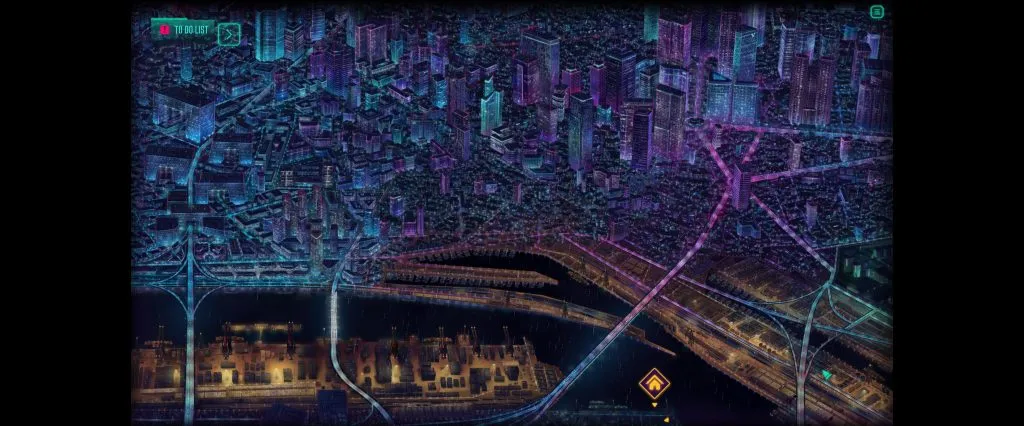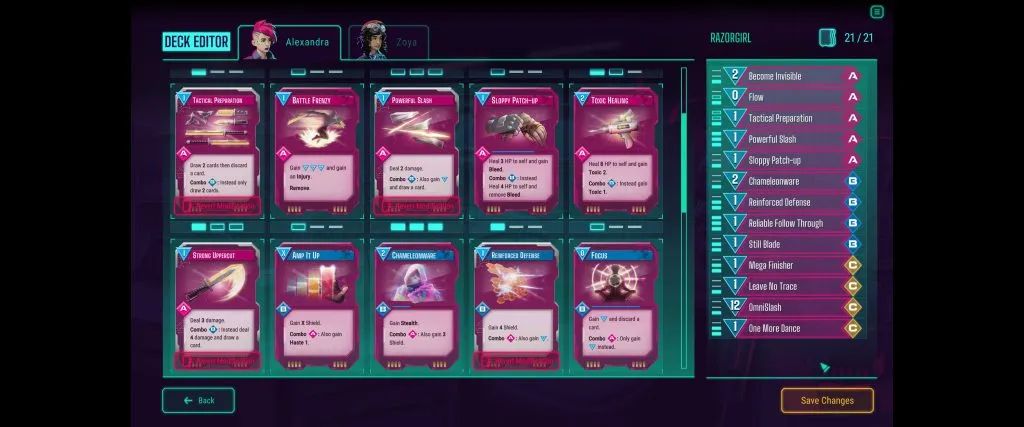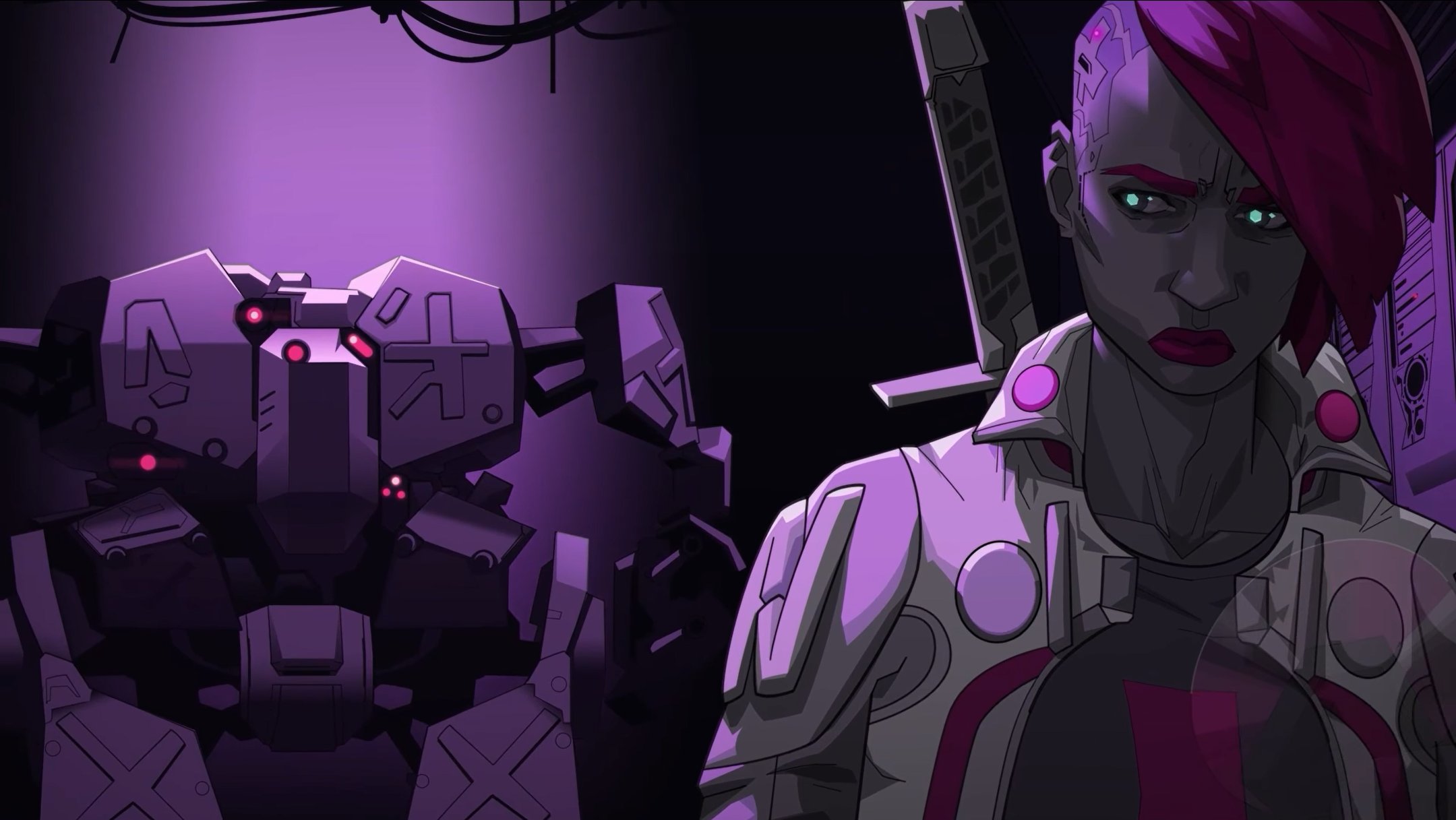Welcome to the world of HeistGeist. A story-driven cyberpunk RPG with some deck-building elements. If you are looking for an RPG that focuses on its storytelling, then jump in with me to find out if this one is any good. Are the heists worth pulling off, or did this one miss the mark altogether?
In this article I will be covering the following topics.
Story
You come into the story as Alexandra and her team are in the middle of pulling off just one last job. That is, until everything goes wrong. Now, she is on the run as the corporation she tried to steal from has sent bounty hunters after her.
On top of that, the client that hired her is very unhappy and still wants the product they were after. They had given her 30 days or else. She must build a new team and find the product before she runs out of time, or worse, the bounty hunters get her.
Gameplay

HeistGeist is through and through a roleplaying game first. By this, I mean the story and its characters are at the heart of everything. The focus felt more on building the relationship between the crew and the events of the heists rather than just solely combat, like a lot of other games I have played recently.
There are some deck-building elements, and combat feels very much like a standard deck-building game, but with a twist. Let’s start off with the crew and work our way to combat from there.
Crew
As with most great heist movies, the main character is not going to be able to pull it all off by themselves. The same can be said here. Alexandra needs a crew. They might be a ragtag bunch, but they can still probably get the job done.
Your crew includes Karel the Fence, Zoya the hacker, and Csaba the smuggler. They are an interesting set of characters with their own backstories and motivations. Between heists you will be able to talk with them to get more of their story.
Each character will play their part during certain heists, even if they do not have a dedicated deck to use. Some characters rely more on their choices in dialogue for their role as opposed to Alexandra’s combat deck or the hacker’s specialized deck of programs and viruses.

Deck
As previously mentioned, there are a couple of different decks in the game. Alexandra’s is focused on combat, whereas Zoya’s is focused strictly on hacking. Each deck has a set size limit as well as hand size. The deck limit is something different from many other deck-building games. Normally, there is no limit, and you have to find nodes to discard cards to keep your deck from becoming unmanageable.
In HeistGeist, it feels more like a collectible card game, such as Magic: the Gathering or Pokemon. Occasionally, you might pick up a card after combat or from searching some lockers you found during a heist. However, those cards are not automatically added to your deck. Instead, they are added to your collection and you need to swap cards out with new ones if you want to use the new ones. There are a lot of interesting cards and combinations to find, so deciding which cards are in your deck can be difficult.

Card upgrades in HeistGeist are also handled differently. To unlock a card’s upgrade options, you have to play the card 20 times. Then, you will have a choice between two different versions of the card. This will update all the copies in your deck to the new version. If you don’t like the version you chose, you can always revert the card back and try the other version.
I will dig more into using the specific decks in a little bit, but I did want to point out that there is a heavy focus on card combos in the combat deck. Not so much the hacking deck. The hacking deck is significantly smaller, though. We are talking 12 cards versus the 21 cards in the combat deck. Both the deck size and the hand size can be increased with cyberware.
Heists
When you are not socializing with your crew, you are planning the next heist. During a heist you will have access to specific members of the team for different tasks. For example, one member might be there for a distraction while someone else on the team is there to hack the security systems.
Each character will follow their designated path on the map. There are often points where they will not be able to continue on their path until someone else on the team has reached a certain location to unlock the path ahead. Occasionally there will be branching paths. These can either be an open option or unlocked from a decision made at another location on the map by one of the team members.

Certain locations will even have a choice that the player has to make. The outcome can directly affect the options going forward. In one heist Alexandra has the option to search a room while the guard is out. You can either search the desk or look at the notes on the whiteboard. One of them will provide codes to a safe that you can use later on to get some additional cash.
Other locations will require hacking and combat. For being a well known thief, you would think Alexandra would be a little bit more stealthy. She sure gets in a lot of fights, but who am I to complain. Let’s dig into what the two systems look like.
Hacking
As mentioned earlier, you will have a specific deck of cards for hacking. The deck size and hand size can be increased by equipping cyberware found on the Black Market. These cards do things like dealing a set number of damage to a node, dealing damage over time, and drawing more cards from your deck.
Each hacking challenge is like a puzzle. You need to use the cards in your hand to break down each of the nodes to get to the end node. Some nodes are more sensitive than others. What I mean by this is they cannot be damaged below zero, or they will break and make the path inaccessible.
This means that having a wide range of high and low-damage cards is very important for hacking. On top of that, you are limited to a set number of turns to get to the end node. If you take too long, then you will be traced and kicked out of the system.

Combat
Combat also uses a deck of cards with a limited deck size and hand size. That is about it as far as comparisons to the hacking system go. The combat deck size is about double that of the hacking deck. With good reason. The combat does not have a turn limit, so you will be going through a lot more cards than you do when you are hacking.
Similar to other deck-building type games, Alexandra has a set number of action points and each card uses some of those action points when played. Unused action points do not carry over to the following turn, but shields are persistent and stay until depleted by enemy attacks, which is always a nice feature. One of the things that makes HeistGeist unique is that the combat revolves around a combo system. Each card is either an A, B, or C-type card. It’s up to you, when building the deck, on how many of each card you want to use.

On each card, you will see two abilities. The first is the basic ability that the card always does. The second ability is what it does if played after a card with a certain letter. As you can probably guess, B cards get a combo if played after A cards and C cards combo after B cards. The A cards are kind of interesting because they mostly combo if played after B cards, but there are some that can combo after C cards. These are nice to have, otherwise C cards usually break your combos.
Combat starts to get really interesting as you upgrade some of your cards with abilities that refund your action points and draw an additional card. As a result, even though your hand might start with just five cards, you could play 10 or more cards in one turn just by playing the cards in the right order.
Black Market
After a certain character joins your crew, the Black Market will be unlocked. This is the place where you will be able to purchase additional cards for your decks. You will also be able to purchase cyberware for Alexandra and Zoya.
Cards can be found on heists, but sometimes, it is nice to be able to purchase the card you need to complete a set or finish that perfect combo you have been working towards. Cyberware is used to increase your deck size and hand size. It can also be used for things like increasing Alexandra’s HP or giving her shields at the beginning of combat. Neither the cards nor the cyberware are cheap, so make sure you are going to be using them before you buy them.

Conclusion
That about wraps it up for this one. So now we have to answer the big question. Is HeistGeist worth your hard-earned cash, or should it be skipped for something more worthy of your time?
HeistGeist is a terrific game that has a really solid RPG foundation. I thoroughly enjoyed both the RPG elements as well as the combat and hacking systems. Both the combat and hacking had their own twist to the deck-building style games that we are used to. As I said, it felt more like a collectible card game than just another generic deck-builder.

I am a big fan of story-focused games. The fact that HeistGeist was made by just a team of four is very surprising to me. It was well written, and all the characters were fully voiced. I am always very impressed when a small indie team puts out a game that is fully voice-acted and with good voice action at that.
If you are looking for the next RPG to have a lot of fun with, then look no further than HeistGeist. The game is out now and certainly worth a look whether you are into RPGs, card-battling games, or all of the above. Go check out their Steam page and give this one a try.
A review code was provided by the developers at Doublequote Studio.







